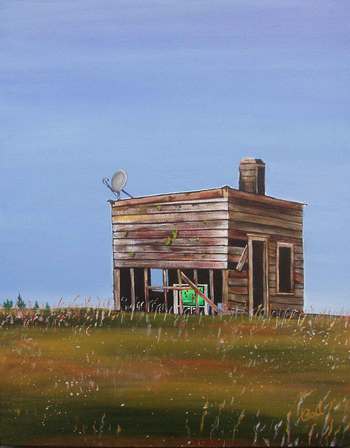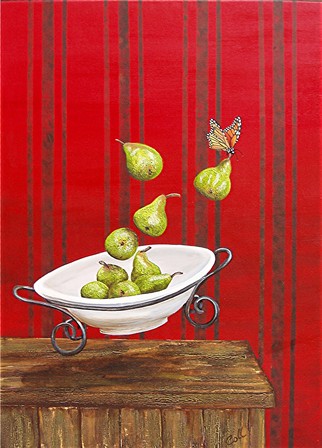What is Symbolism in Art
The Role of Symbols in Art: Unveiling Their Hidden Meanings
From ancient times to the modern day of today, symbols have held a significant place in art, allowing artists to communicate complex ideas, emotions, and stories without needing to use words. Symbols often represent abstract concepts, such as life, death, purity, or even pleasure, and they serve as visual metaphors that enrich the meaning of a piece of art.
The Most Common Symbols in Art
Artists often use specific objects or motifs to convey deeper meanings. For example:
- Blackbirds: Such as crows are a symbol of death or the end of life.
- Eggs: Represent fertility and the potential for new life.
- White Roses: Seen as a symbol of virginity, innocence, and purity.
- Fruit: Frequently symbolises sensuality and sexual pleasures.
An image carrying layers of meaning can help tell an entire story despite appearing simple on the surface. I enjoy using the monarch butterfly in my artwork, as a symbol of beauty and freedom while in other works I use eyes which represent a window to the soul.
Hidden Meanings in Art
In many cases, artists will embed hidden meanings within their work, using symbols to communicate the messages that aren't immediately obvious. I myself often use symbolism in my artwork but am often surprised by what people assume an artwork means, as it can sometimes be something completely different!
Since artworks typically do not include written explanations, these symbols serve as clues to the viewer, guiding them toward the artist's intended message. It doesnt mean its wrong if it is interpreted differently, in fact I encourage people to see what they want to see regardless of what I may have been saying.
Without knowledge of the symbols, it's easy to miss the more profound meaning of a painting or sculpture but thats ok.
This is especially true in modern times, where certain symbols that were once widely understood are now less familiar to contemporary audiences. By learning to recognise these symbolic elements, we can unlock new layers of understanding and appreciation for the art we encounter.
The painting below is titled Size Zero, the symbolism of a skeleton is obvious but combined with the pills the skeleton is taking speak more of extreme issues with the desire to be thin.
The Origins of Symbolism in Art
Symbolism as a formal artistic movement originated in France in the late 19th century. It was part of a broader movement where art became infused with mysticism and allegory, drawing heavily on the use of symbols to convey deeper, often spiritual or emotional meanings. The word Symbolism refers to the systematic use of symbols or pictorial conventions to express an allegorical meaning, usually addressing ideas that go beyond the visible world.
This artistic movement wasn't limited to visual art but also applied to poetry and other literary arts. The term itself was created by critic Jean Moréas, who wanted to differentiate Symbolist artists and writers from the more decadent movement that was prevalent at the time.
Symbolism in art was deeply connected to the darker, gothic side of Romanticism, focusing on mystery, emotion, and the unknown. While Symbolism as a style has evolved, its impact remains evident in various movements, such as Surrealism and Expressionism, which often draw on symbolic imagery to communicate their message.
The Connection Between Symbolism and Other Movements
While Symbolism shares similarities with movements like Expressionism and Surrealism, its mystical and philosophical undertones differ. Surrealist and Expressionist artists often used symbolism without labelling their work as such. However, Symbolism also influenced the development of Aestheticism, a movement closely related to it in terms of philosophy.
Famous Symbolist Artists
Many prominent artists have incorporated Symbolist elements into their work. Some of the most notable include:
- René Magritte: Known for his dreamlike, surreal imagery, Magritte used symbols to challenge perceptions of reality.
- Gustav Klimt: A significant figure in Symbolism and Art Nouveau, Klimt's paintings are rich with symbolic references, especially in works like The Kiss and The Tree of Life.
- Edvard Munch: Best known for The Scream, Munch's art frequently explored emotional and psychological themes through symbolic imagery.
- Henri Fantin-Latour: A French artist who used allegory and symbolism in his still lifes and portraits.
- Jan Toorop: Known for blending Symbolism with Art Nouveau in his expressive, highly symbolic works.
Other influential Symbolist artists include Frida Kahlo, Elihu Vedder, Remedios Varo, Morris Graves, and David Chetlahe Paladin. The renowned sculptor Auguste Rodin is also considered a Symbolist, particularly for his evocative sculptures that capture intense human emotions and spiritual ideas.
The Use of Mythology and Dreams in Symbolism
Symbolist artists often drew upon mythology and dream imagery, creating a unique visual language that sought to depict the world of the soul. Unlike modern, recognisable symbols (think of McDonald's golden arches), Symbolist symbols were often personal, ambiguous, and obscure, making them more difficult for casual viewers to interpret.
This use of dreamlike, private symbols had a significant influence on the contemporary Art Nouveau movement as well as the artists of Les Nabis. By focusing on evocative, mystical, and often emotional subjects, Symbolist painters created artworks that went beyond mere representation and sought to evoke the inner workings of the human mind and soul.
The Legacy of Symbolism
In conclusion, symbolism in art is not just a historical footnote, but a living, breathing philosophy that continues to inspire artists and captivate art lovers. Its influence spans across centuries and movements, from Romanticism to Modernism.
Many contemporary artists still draw inspiration from Symbolist ideas, exploring the power of symbols to evoke meaning, tell stories, and create a connection between the viewer and the unseen world.
Symbols have always been central to art's ability to communicate beyond what is visible. By understanding these symbols and their meanings, we can gain deeper insights into the works we encounter, whether they come from the 19th century or modern-day artists. Symbolism in art is about more than visual beauty.
It's about using imagery to access profound emotional and spiritual experiences, and by understanding these symbols, we can enhance our appreciation of the art we love.



